Business, Innovation & Tech Blog
Updates from Paul Spain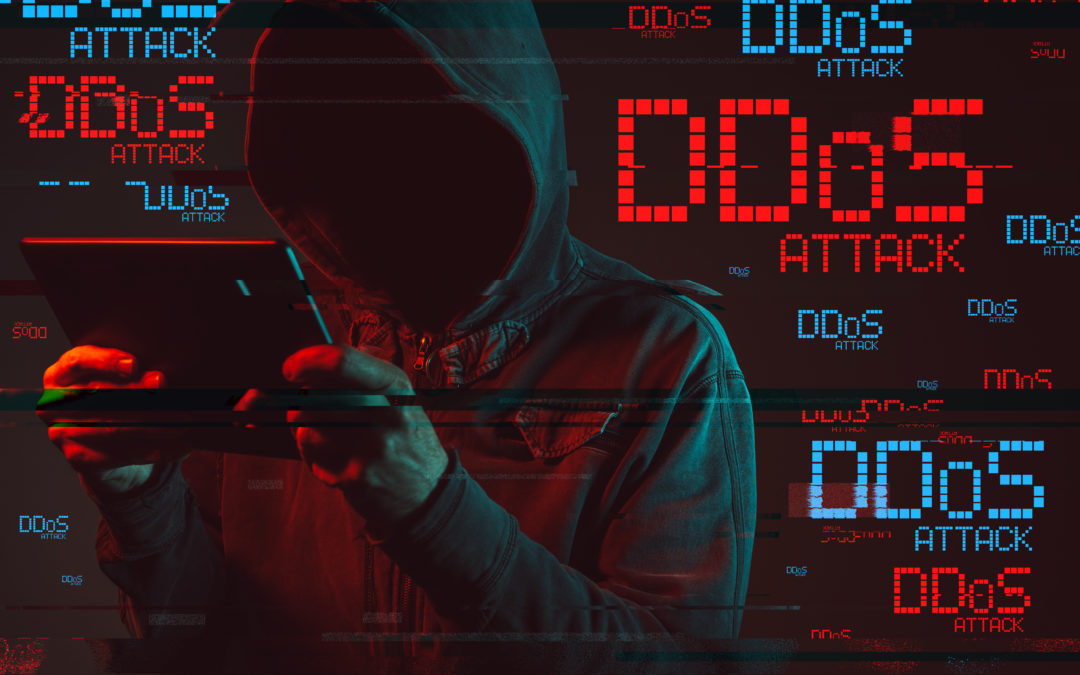
New Zealand under Denial of Service Attack
New Zealand organisations have been dealing with ongoing Denial of Service Attack attacks – at a scale much bigger than the typical attacks which hit our organisations each month. Kiwibank, ANZ, NZ Post and the Metservice have been specifically highlighed as having been hit by ongoing Distributed Denial of Service attacks which have blocked access to their websites, online banking and mobile banking apps.
What is a Denial of Service Attack (or Distributed Denial of Service Attack)
You can think of Denial of Service (or DDoS) cyber attack a little bit like what happens when too much traffic means roads are blocked for a period of time. However in a DDoS attack instead of roads it’s parts of the internet that is getting blocked – and these attacks are typically carried out maliciously for financial gain.
So let’s say people want to get to a location by car – if too many people are trying to reach that location all at once there can be an issue of too much traffic. In bigger cities such as Auckland, Wellington or Christchurch we see this with rush hour every day. And sometimes roads are blocked deliberately such as during a protest and then nobody can get to certain locations.
In a denial of service cyber-attack – it’s similar but online – with effectively too many computers trying to reach a particular website (such as your bank) all at once.
A cyber attacker can achieve this by controlling a very large number of computers and commanding those computers to flood a particular website and therefore make it inaccessible.
What can be done?
Organisations can reduce the impact of a Distributed Denial of Service (or DDoS) attack by preparing upfront and using a provider who are specifically geared up to protect against such attacks. This is especially important for businesses who have a customer portal or who carry out online transactions (ecommerce) through an online store.
It’s also possible for attacks to happen not just on websites, but on other key infrastructure – such as an online phone system, virtual private network link or office internet connection. Advance planning is always best, however infrastructure changes can be made on the fly when an organisation is under attack by cyber criminals.
This item was original published on the Gorilla Cyber Security NZ updates page.

REvil compromises Kaseya in one of World’s largest ransomware attacks
One of the world’s largest ransomware attacks is currently ongoing, with thousands of organisations thought likely to have been impacted. In New Zealand the Ministry of Education indicated at least 11 schools have had their systems compromised including St Peter’s School in Cambridge.
Due to the scale and severity of the attack, US President Joe Biden has already ordered an immediate investigation. Initial indications point squarely at Russian ransomware gang REvil as culprits. The same group has been implicated in many other cyber incidents include the attack on meatpacking firm JBS who are reported to have paid a US$11m ransom.
It has been documented that the attackers have been requesting ransoms starting at over NZ$60,000 which must be paid in cryptocurrency. Such a payment
Attack Vector
The cyber attack started on Friday in the United States, just as the country was heading into a holiday weekend. It appears numerous IT providers globally running Kaseya VSA software had their systems compromised by cyber criminals. Once the cyber criminals have had control of an IT provider’s Kaseya systems, then they used this software to spread ransomware to their client’s computers. Once in place on client systems the malware began encrypting data and then started requesting ransom payments.
What to do if your organisation uses Kaseya VSA software
Kaseya advise shutting down your Kaseya VSA servers immediately until they provide more details. If your organisation has been compromised then all computers should be shut down.
Learnings
As founder at Gorilla Technology and Gorilla Cyber Security I spend a lot of time thinking about and researching cyber security. It’s important to recognise that any organisation can be hit anytime. Many people try and ignore the cyber risks and have their own reasoning why their company won’t be targeted, such as the small size of their firm. Unfortunately however, even an individual working from home may be hit by a cyber security incident – many of which are effectively random and indiscriminate.
With this attack falling hot on the heels of the Solarwinds hack all Managed Services Providers will be considering how they can ensure the remote management and monitoring tools they use are not utilised in a similar manner to these two attacks.
Here are some of my immediate cyber security tips for New Zealand organisations:
- Ensure your backups are running reliably, that you regularly carry out disaster recovery drills and have a current incident response plan
- Before purchasing and installing new software for your organisation ensure it is evaluated from a Cyber Security risk perspective
- Step up your overall cyber security immediately – if you weren’t hit this weekend, the chances are that you will be on another occasion. Things to do include:
- Ensure multi-factor authentication is in place and enforced across all systems
- Patch and update software on an ongoing basis – and at least monthly
- Use a password management tool to help ensure all your passwords are unique
- Limit access to each area of your data only to those who really need it
- Do not just accept standard configurations of IT systems – ensure they are configured to minimise cyber risk
- If unsure of how secure your organisation is, invest in a cyber security audit

Neuralink: Brain-Computer Interface of the Future
Over recent years Elon Musk has had a team working on something would appear to be in the realm of science fiction.
However, if Musk’s Neuralink is successful then one day some people could utilise a Neuralink brain-computer interface to be able to quickly and easily control computers, robots, wheelchairs and even autonomous cars in the future – with just their mind.
The initial selling point for a technology like this seems to be focussed on those who are paralysed in some way and may have limited ability to directly interact with devices such as smartphones today. It’s also been suggested one day the technology might enabled in multiple parts of the body – “thus enabling, for example, paraplegics to walk again.”
For now, we’re aware the technology has been tested with both pigs and monkeys. The video apparently shows a macaque monkey playing the video game Pong with just it’s brain – and the incentive a smoothie hit through a metal straw whenever it correctly hits the ball or puck in Pong.

Robotics and Automation vs The Workforce
The World Economic Forum’s report ‘The Future of Jobs 2020’ states that the global workforce is automating faster than expected, with 85 million jobs expected to be displaced by the end of 2025.
Fortunately, the World Economic Forum indicate the robotic revolution should create 97 million new jobs. That still puts some communities at risk from disruption – and support will be needed to upskill and retrain many people.
By 2025, skill such as analytical thinking, creativity and flexibility will be in high demand; with roles related to data, artificial intelligence, content creation and cloud computing near the top from a demand perspective.
Paul Spain, Chief Executive and Futurist at Gorilla Technology states “To be competitive, organisations should embrace automation technologies whilst supporting existing employees by helping them reskill and upskill. Business leaders who are not currently helping their people to learn new technologies should consider doing so”
“Whilst some see robotics and automation as the enemy – it’s important to think of such technology as tools to enable New Zealand and the world to solve some of our big challenges such as lowering the cost of healthy food, improving productivity and helping to reduce the cost of housing and transport. I would encourage everybody to stop and put time and energy into considering how automation and robotics could change their employment or their sector – and then make appropriate changes so as to be on the right side of future transformation. Every individual who thinks like this, thinks as futurist does and therefore has the potential to help shape the future in some way” says Spain.
Local companies to watch in the fields of Robotics and Automation:
- Robotics Plus – helping automate aspects of fruit growing and fruit packing
- Rocos – Providing a robotics operating platform to control various robots such as Boston Dynamics’ Spot (robotic dog) to robotic autonomous boats at sea
- Scott Automation – automated production, robotics and process machinery
- Xero – automating aspects of bookkeeping and accounting
- Many other software developers and technology services providers in New Zealand – involved in some forms of automation and utilisation of technology to make their clients more efficient and effective
Delve deeper with PWC’s report “Will robots really steal our jobs?” and the World Economic Forum’s “Recession and Automation Changes Our Future of Work, But There are Jobs Coming, Report Says.”

Cyber Security Attacks: Is it safe to pay a ransom? Can an attack be kept secret?
For most organisations, ransomware is currently their biggest cyber threat. Currently in New Zealand, we only hear about the headline cases that have impacted Kiwis – such as Travelex, Toll, Lion and Fisher & Paykel Appliances. This year however thousands of New Zealand organisations have likely been impacted such incidents and demands to pay a ransom. And with new privacy regulations coming into force in December, disclosure will immediately be mandatory for some cyber incidents.
However, the legality of paying a ransom is now in question. Whilst the ethics of encouraging cyber criminals by paying ransoms has long been a question, it’s now been indicated by the United States Treasury that organisations and their insurers risked violating regulations if they pay ransoms to cyber criminals.
Because cyber criminals may reside in countries which New Zealand (amongst other countries) has placed financial sanctions on this could put people and organisations at as one potential penality is up to 1-year in jail if they pay a ransom that ultimate ends up in such as country. It’s worth noting that we have sanctions in place against North Korea which is a state considered as a heavily focussed on cyber attacks – with an estimated 7,000 operatives trained in cyber attack methods and cyber warfare.
The role of insurance companies may be changing too, as policies which paying ransoms are expected to rise in line with the dramatic increase in ransom costs of some 10-time since early 2019. Add to this the legal issues with paying a ransom and the option of having your insurance company provide this support may disappear.
It’s my opinion organisations that don’t have confidence they can withstand a cyber-attack should promptly get a cyber security audit initiated and also put in place cyber security awareness training. If you don’t already have a favored partner to assist with cyber security matters, my team a Gorilla Cyber Security can help with.

It’s not time to stop the Digital Transformation of COVID-19
COVID-19 has lead to an unprecedented level of digital transformation in a very short space of time. But most of it was dictated by necessity – to work from home for many businesses – or to offer online ordering and deliveries for restaurants, cafes and retailers that may not have already being doing so.
A mistake many businesses have been making is they are stopping the digital transformation just as it’s getting started. However, I believe history will show that those businesses who committed to continuous digital enablement and innovation will be key amongst the success stories of tomorrow.
What should businesses focus on from a digital transformation perspective?
It starts with empathy for those who matter to your business – your team, your customers and your business partners and any other stakeholders. How can your improve things for these people? For instance, can you make any of these things easier?
-
- Communications – for instance, is it time to provide a chatbot to help customers 24/7
- Purchasing – getting prices, checking stock, placing orders
- Could returning products involve a simplified online process
- Feedback – are you surveying your customers and getting a digital pulse on our service, your products and overall customer satisfaction?
- Staff satisfaction – are you collecting digital satisfaction surveys so you have a continuous view of staff satisfaction?
- Hiring – could you make it easier for potential team members to present themselves to you via a digital hiring portal?
- Do you have an online learning programme so staff can continue to learn and grow throughout their tenure?
Who can help?
You don’t need to be a technically inclined person to take advantage of technology. I love working with people who are and willing to bring change and innovation into their organisations. I don’t judge someone based on their technological prowess at all – I look for and openness and willingness to take advantage of the tremendous leverage of technology.
Likely you’ll be able to find a relevant business and technology expert who can help you as I do with my clients. And you may well already have people on your team who would love to be part of your digital transformation.
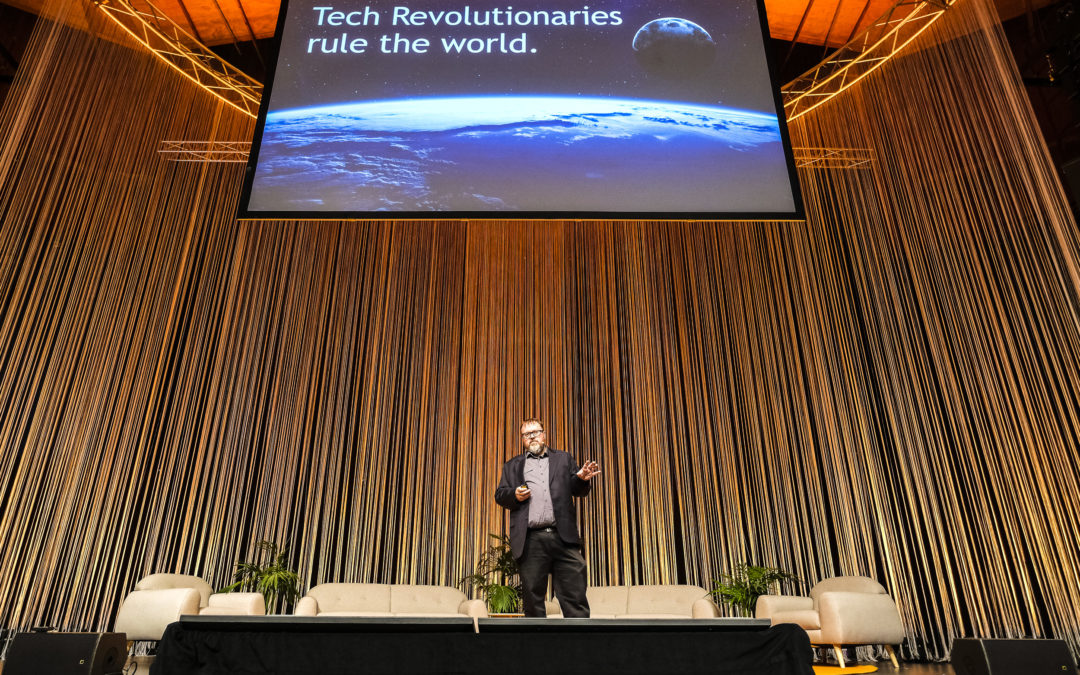
NZ as a Tech Industry Safe Haven and Long Term Innovation Hub
New Zealand continues to attract attention as an incredible place to visit and live, is largely COVID-19 free outside of quarantine, has leading broadband infrastructure and a tradition of being safe and friendly for migrants and business – so let’s invite the world’s leading technology firms to establish innovation and operations hubs here.
Whilst we might not see an immediate rush to our shores, there is the opportunity to make a strategic decision now that helps New Zealand build momentum that leads to outcomes decades into the future. While world media seems ready to talk about New Zealand, let’s give them something to discuss that would help us grow.
Bringing home our best and brightest Kiwis
A pat on the back to policy makers for making it safe and reasonably easy for Kiwis from around the world to get home – including many of our best and brightest exports.
I wholeheartedly agree there are benefits in Kiwi innovators from around the world coming home – which conveniently is already happening. This has led to what is being labelled the ‘reverse brain drain’. But we would be missing a trick if we think they shouldn’t bring their colleagues and their employers with them.
I think of Silver Peak Systems, a Kiwi founded Silicon Valley company that just sold for over NZ$1B. I’d love to see founders of innovative companies like Silver Peak running at least part of their global businesses locally – and for New Zealanders who work for other international employers, have them move to bases in New Zealand.
Aren’t Kiwis good enough?
I can’t knock our incredible people who have built businesses such as Xero, Navman, RocketLab and PushPay – and newer players such as Robotics software firm Rocos and digital human specialists including Soul Machines and Ambit. However, anyone who has spent time in Silicon Valley, or virtually any other major tech hotbed, will know that often those who invent, innovate and build tech businesses were born in countries different to where their companies are based.
Certainly I think trying to create a clone of Silicon Valley here in New Zealand is unhelpful, but there are many things we can learn from the successes of innovative firms from the U.S. and around the world. And making those firms and their people welcome in New Zealand now could spark something special that endures long term.
Why focus on the tech sector locally now?
The most recent Technology Investment Network report (TIN200) showed that the tech sector in New Zealand grew by $1.1 Billion in just 12-months. If this acceleration continues then within just 3-5 years technology could become New Zealand’s top export earner.
With the tourism sector hit so hard and other exports at risk from factors such as environmental challenges and geopolitical uncertainty, now is the time to make strategic decisions that will have an impact both in the short term and for decades to come (rather than those initiatives that conveniently fit with the election cycle.
And let’s not forget, New Zealand and most of the world is in a recession, so there’s wisdom in making moves that help shift the balance back in our favour. Especially those with the potential to create jobs not just now, but for the next generation of Kiwis too.
Why come to New Zealand?
For global tech and tech enabled innovators New Zealand has many great things on offer. These are some of the things that would attract well known companies such as Microsoft, Apple, Google, Amazon, Tesla, Uber, Ola, Airbnb, HP, Samsung along with new start-ups:
- Ranked #1 country for ‘ease of doing business’
- A beautiful country to live and work
- World class broadband infrastructure
- People – Kiwis are liked far and wide and seen as being friendly and easy going, whilst also being known internationally as hard workers who often deliver innovative thinking
- Reasonably priced in terms of rent, compliance costs and salaries (some room for growth here)
- New Zealand has a tradition of being safe politically and financially
It turns out that New Zealand is a great place to both live and work. Whether in the uncertain times of COVID-19 where many parts of the business world are able to operate with near zero risk of infection – or in the future when the world has moved beyond the pandemic – this is a great country for businesses, families and individuals due to it being spacious, uncrowned and packed with people who are known internationally as being both friendly and hardworking.
Filmmakers have already discovered what a great place New Zealand is to work. And numerous global companies who acquired New Zealand businesses have recognised the benefits of keeping teams in New Zealand ongoing – including Apple who acquired Power by Proxi in 2017. It’s appropriate to also mention the super innovative U.S. headquartered and funded Wisk who have been testing an autonomous electric air taxi in Canterbury.
What’s in it for New Zealand?
Right now our tech sector is comparatively small when compared to most other markets. New approaches that allow us to grow the tech sector using the huge funding from Silicon Valley and global tech giants in a manner that also helps our economy is worthy of consideration.
Longer term, New Zealand must increase our ‘weightless exports’ – which includes generating more from technological and creative products and services. The potential income which can be generated by export physical things (manufactured good. Meat, dairy and produce) is limited, often incurs high transport costs or has a significant environmental impact.
We’ve previously seen governments support the establishment and growth of the film industry which grew from nothing to be an important part of our economy in its own right due in part to the numerous international productions that have come here (following Peter Jackson’s ground breaking vision and achievements).
The broader technology sector is not one without struggles locally. I often hear of the challenges finding the right skills locally. Whilst we can partially address that through study (which needs to continue as Kiwis should be lifelong learners), there is nothing more useful than first hand experience and therefore NZ needs to attract more of those with industry experience that may not exist locally. And that’s where inviting the best tech companies to make New Zealand a place where they establish innovation and operations bases comes into play as it has the potential to create the momentum we need.
Can’t we just upskill our own people?
It’s a very important part of New Zealand’s future that we upskill ourselves. Having a broader base of employers within the country will creating a rising tide in terms of the overall tech talent in New Zealand which in turn will help our grow our own people – many of whom are hungry to learn and would lavish the chance to work for global innovators.
What next?
As such a small country, just 1000-2000 new arrivals could significantly impact the Kiwi tech sector (and some have suggested to me even a much smaller number would be great to help get things started). And if the momentum were to build, then our country would be all the better for it.
To get the ball rolling, we need to adopt this strategy and get behind changing New Zealand’s future – delivering something that would positivity impact not only our economy, but creating more jobs and learning opportunities for Kiwis – all whilst investing into an area with limitless potential and with a strong environmental upside (top tech players such as Microsoft and Apple are committed to being carbon neutral by 2030).
Paul Spain is Chief Executive and Futurist at Gorilla Technology, host of NZ Tech Podcast and NZ Business Podcast and a keynote speaker.
Apple’s big news
Watch the latest NZ Tech Podcast episode to hear about the latest from Apple.
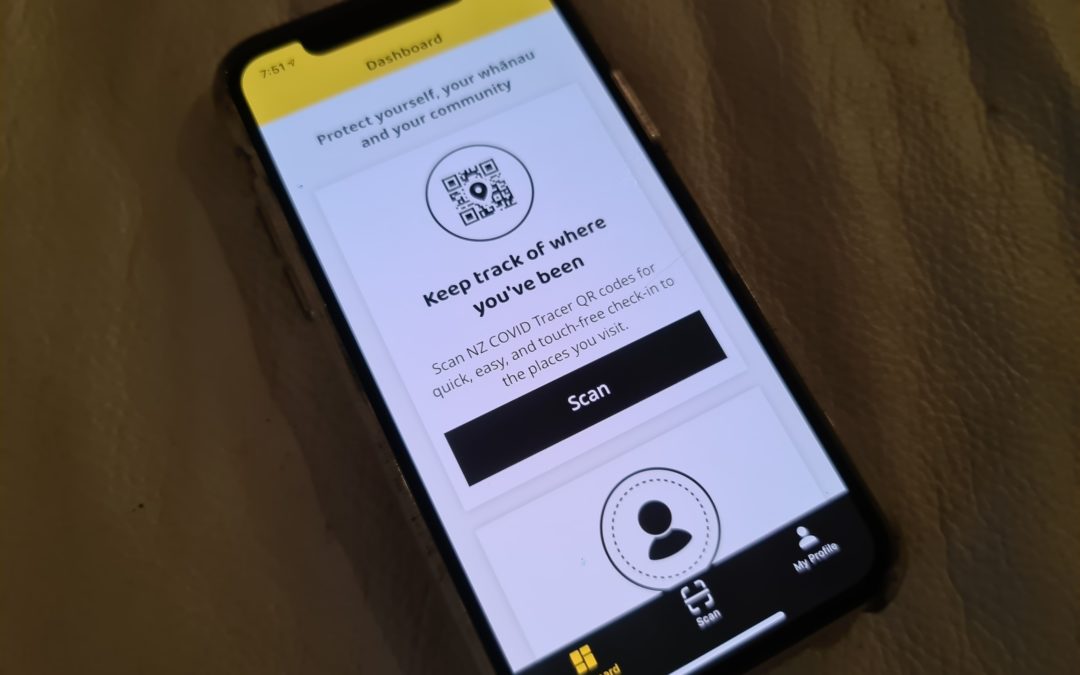
NZ COVID Tracer app: Going Soft, Going Late?
Last night the NZ COVID Tracer app was released on Apple’s App Store and the Google Play store (for Android). Naturally I installed it and took a look around.
Firstly, let’s just say that I’m really pleased that the Ministry of Health has decided to support having contact tracing technology in the hands of citizens in the form of the NZ COVID Tracer app. However, if I look critically at the app, there are some aspects that are disappointing:
- Initial functionality is limited to scanning a QR code at premises you visit – however, none of around 20 or destinations I checked with this afternoon were displaying a QR code compatible with the app. Those I asked advised they’d not heard from any government entity (Ministry of Health or Ministry of Business Innovation & Employment) regarding getting registered with a QR code for the app.
- There is no functionality to manually document locations you’ve visited – for instance those without a QR code, or those you visited before installing the app (this seems essential for an app that is being promoted as keeping a record of the places you go)
- The app is buggy right now (I experienced issues with signup and with logging into the app)
- The app isn’t available for those who have their app store login linked to other countries (unlike most NZ banking apps, etc which can be downloaded even if your account is linked to the United States Google Play store for instance)
- There’s no Bluetooth tracking capability as used in apps installed by millions of people in Australia and Singapore. As Singapore shared details of how they did this a long time ago and Australia delivered this weeks ago it should have been easy to incorporate it from the get go rather than offering up an indication this will come in June.
To sum up this app release, it doesn’t seem to line up with the “Going hard and going early” approach the government has touted – it feels a little more like: “Going soft and going late.”
There is enough to make the initial app useful soon and it will no doubt be downloaded by a lot of people. Plus, it’s fair to say that apps in other countries haven’t been as successful as many hoped they would be, so New Zealand coming late to the game has an advantage of learning from shortcomings elsewhere.
Fortunately, apps can be quickly modified, improved and updated. I am trusting that Ministry of Health have just got this initial version of the NZ COVID Tracer app into the hands of the public after a short development cycle with the goal of improving it rapidly over the days and weeks ahead.

Ransomware – it is rapidly getting nastier
Ransomware is a form of malware or computer virus that demands a ransom from its target – and unfortunately for everyone but the cyber criminals – it’s impact is increasing – both in New Zealand, and around the world.
In the past, the cyber criminals behind ransomware might block access to your data if you didn’t pay up. Though with a recent enough backup you could avoid paying the ransom. In recent months however, the ransoms have shot through the roof and some cyber criminals will release your private data to the world if you refuse to pay the ransom in the timeframe they demand.
Most ransomware victims are small businesses with it recently suggested that 1 in 5 small businesses have been hit. So why are so many organisations getting hit with ransomware? I think it comes down to apathy, there’s a feeling that “it won’t happen to us” within a lot of firms who refuse to invest in cyber security. It reminds of the early days of PCs and Macs, most people didn’t back up their data. But slowly that changed as everyone had an incident where they something important, and from that point on, they started taking backups seriously.
When I first started raising concerns about Ransomware publicly about 7 years ago, most organisations that were hit would receive a ransom demand of perhaps a few hundred dollars. In recent months those paying ransoms have seen their average pay out pass $180,000. This is around 10 times what it was at the beginning of 2019.
Add to that examples, such as ExecuPharm – who had their confidential and private data leaked to the internet (everything from emails, to drivers license numbers and credit card details) following a ransomware attack and the impact of getting hit be cyber criminals is getting nastier by the day.
What should a Small Business in New Zealand do?
If you’re not sure how secure your organisation is then now might be exactly the time to get a Cyber Security audit so you can minimise the risks. In the immediate term, have your IT team review:
- Security surrounding any remote access to your network
- How up-to-date your software is
- Your password security (is anybody using the same password on more than one system?) and use of multifactor authentication (much the same as what your bank demands)
If you’re not sure of your security state, then consider investing in Cyber Security audit – a basic cyber security audit can run as low as $1500 for a small business in New Zealand.
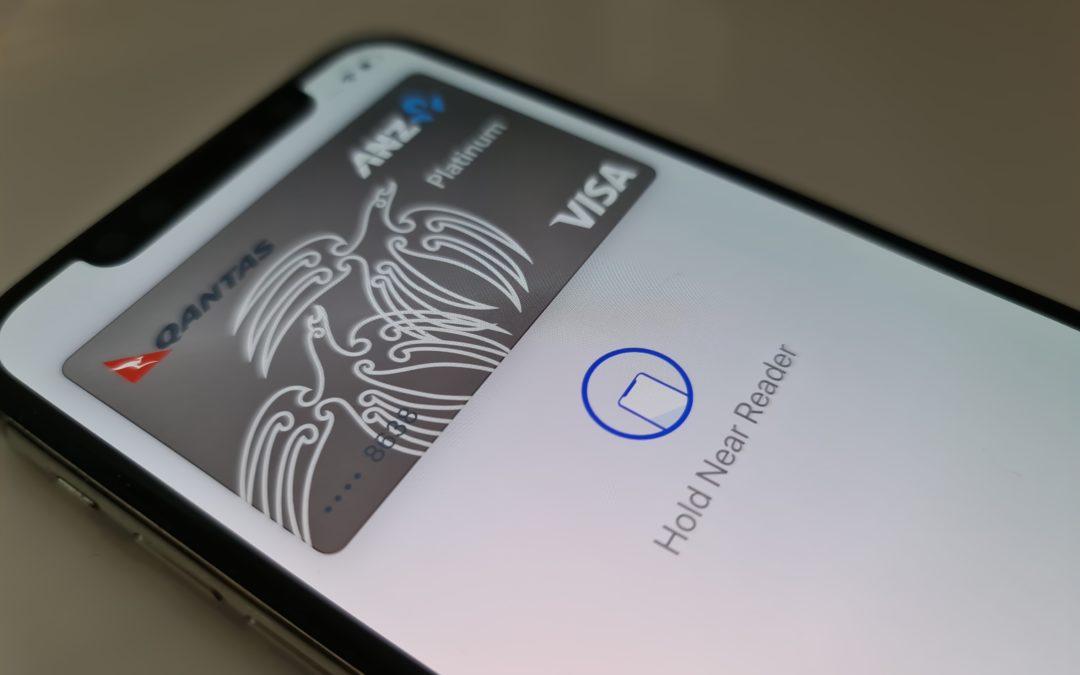
Moving NZ Business forward – with Digital Payments
Many small-medium businesses in New Zealand right now are being forced to look for digital solutions to their challenges. In some cases it’s necessary as there are few other options to operate during the COVID-19 era, in others this pushing forward probably should have come much earlier but the current era is forcing a move by businesses who wish to attract new business.
Fresh approaches to transacting can simply being contactless payments using exiting EFTPOS and credit card terminals – in other cases it will be a fresh approach to transacting via E-Commerce.
Tap to Pay
Many businesses with an EFTPOS payment terminal will be able to have contactless payments turned on if they don’t already. This facilitates transactions through a physical credit card (Visa payWave or MasterCard PayPass) in addition payments via Apple Pay, Google Pay and Fitbit Pay on smartphones and wearable devices such the Apple Watch and Fitbit.
E-Commerce
Many small business owners I’ve spoken to in recent weeks have had an opportunity to transact online for a long time – but in many cases found it easier to stay with the status quo. Online business and ecommerce can be carried out via a range of mechanisms – including extending their own website, linking to an external payment gateway, or by selling through a marketplace such as Trademe or UberEats which bring a large pool of potential customers.
What’s right for your business or charity?
What is the best approach is will vary – but put some new digital payment mechanisms will be beneficial for many businesses and non-profit organisations. I suggest collaborating with others to settle on an appropriate option quickly – that might involve small-medium business technology experts (such as my team at Gorilla Technology) and also with other friendly business owners and experts in your field.
Recently, I spoke with a business adviser who is fielding many opportunities to provide services. We determined that an online portal where his time could be scheduled and paid for in advance would be hugely beneficial in increasing how many people he could help. By minimising the time overhead with manual invoicing and payments, along with an automated online scheduling service the business would be easier to operate and be more profitable.
In another situation I came across a restaurant owner with limited resources who enabled two options for ordering – one via UberEats which took care of delivery and payments, the other by taking orders utilising Facebook Messenger and then contactless payments with a credit card. In the case of the Facebook ordering, this enabled building a list of customers and fans who can be engaged with on an ongoing basis.
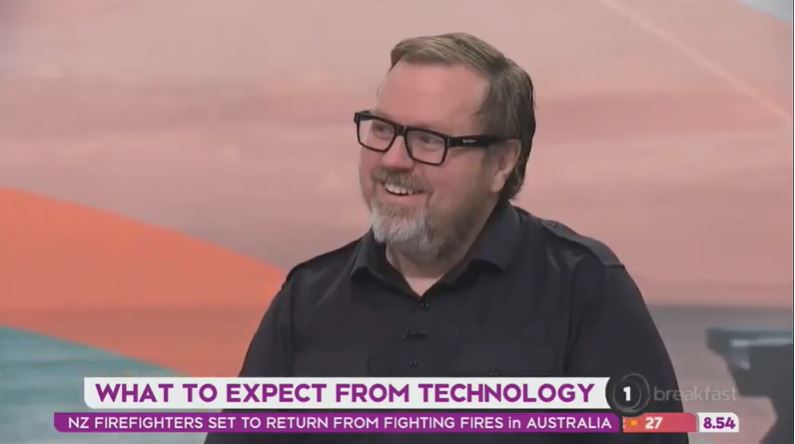
Sharing a Futurist viewpoint with John Campbell on TVNZ Breakfast
Paul continues to be asked to share on the futurist mindset with a broad range of audiences – via mainstream media and at a keynote speaker. You can learn more about Paul’s public speaking – or feel free to get in touch.
Tuia 250 Privacy Breach – Ministry for Culture and Heritage
Tuia 250 Privacy Breach – Ministry for Culture and Heritage
Paul SpainThis morning I was interviewed by on RNZ National programme ‘Morning Report’. After further queries about this breach it seems appropriate to share a little more detail here for those who are interested. In summary, a website (tuia250.nz) built by a third party for the Ministry for Culture and Heritage unintentionally made available digital copies of the following documents:
- 228 passports (209 NZ passports, 19 international passports from Australia, Brazil, Canada, China, Denmark, South Africa, UK, USA)
- 55 driver licences
- 36 birth certificates
- 6 secondary school IDs
- 5 NZ residential visas
Digital copies of some of these documents are now in the hands of unknown people and there is already a case in which misuse of one of these documents has been attempted. There is risk to all individuals who documents have been compromised – including fraud and identity theft.
How should organisations choose to store digital copies of passports and personal identification?
Choosing how to secure and store this sort of data is a critical organisational decision. It should ideally be directed and signed off by senior staff with both an understanding of the cyber security and the impact of mistake with others data. This might typically include a Chief Information Office (CIO) or a Chief Information Security Officer (CISCO). It seems likely that step didn’t happen in this case – possibly an internal process was missed or lacking in this case. Naturally there is technology for storing personal information within government and businesses that encrypts the data. There are also technologies focused on minimising the risk of the data getting out known as Data Loss Prevention (DLP). In this case it appears the data wasn’t encrypted or protected by DLP software and policy. Organisations that need identification should avoid holding on to this data unnecessarily. If a check can be made quickly without storing copies of documents, that will often cost much less than storing the data due the huge security responsibilities of storing identification documents.
Was the website developer at fault?
It maybe unfair to expect a typical small New Zealand website design firm or website developer to have expertise in how to secure such critical data. This would be different if they were a large technology provider contracted for this job because of their specialist skills in dealing with data of this nature and were contracted specifically to put suitable protections in place.
How should individuals react to requests for copies of their identification documents?
Whenever I’m asked for a digital or paper copy of my identification documents (such as a passport or driver license) i usually look to see if there is an alternative. I understand some organisations need to view this information, but in many cases they should not be storing it. If I’m providing a copy of my passport, I’d prefer to know that data would be immediately destroyed – or that it were protected by an enterprise grade DLP (data loss prevention) system. As I mentioned on Morning Report, dealing with Identification documents is challenging for many organisations now – many ask for copies of Passports and Driver Licenses and choose to store them. Knowing how poor security of this data can be, I often refuse to supply copies of a passport or driver license digitally, and I request paper copies are shredded or returned to me.
Is current legislation around copying personal identification documents adequate?
I haven’t read the related legislation however current practices around copying personal data seem very loose and I believe it’s time the government considered how we reduce further risks.
Zephyr Airworks CEO Fred Reid and Cora Autonomous Electric Air Taxi
Paul Spain joined Zephyr Airworks CEO Fred Reid to hear about Cora, the vertical take-off and landing (VTOL) aircraft from Zephyr Airworks and Kitty Hawk. To be launched as an autonomous electric sky taxi, ‘Cora’ started out being developed secretly in 2010, funded by Google Co-founder Larry Page.
Now Cora is getting regular testing in the South Island of New Zealand, facilitated by a Government that encourages innovation research and development. Paul hear a little about Cora’s progress and the path ahead for Zephyr Airworks – including the possibility of Auckland soon becoming a city with autonomous electric air taxis so people can make super fast and inexpensive trips – such as to The Coromandel – or to commuting locations (avoid the delays of rush hour road traffic)
iPhone X review and hands on experience
Today the iPhone starts being received by those who pre-ordered both here in NZ and around the world (depending on your time zone). Thanks to NZ seeing the sun first we’re ahead of the rest of the planet. In my case, I’ve been using the iPhone X (pronounced ten) since Wednesday NZ time.
Screen
The OLED screen is gorgeous. That said, we’re already used to great screens on iPhones and the top smartphones from the likes of Samsung. Incidently, Samsung actually produce the screen in the iPhone X.
Face ID – screen unlocking
Face ID (using your face to unlock the phone) fortunately works pretty well most of the time. I’ve found if you hold it too close to your face that can be a problem. I hope software updates improves the reliability in situations where Face ID fails to unlock the camera.
The Lack of a Home button
I’m still getting used to this, but I don’t see it being an issue – I prefer the bigger screen than a button taking up screen space.
Wireless Charging
As a big fan of wireless charging I’m very happy Apple have finally added this across the iPhone 8, iPhone 8 Plus and the iPhone X.
Portrait mode photos from front camera
This is an added benefit of the Infrared camera being used for Face ID – you gain portrait mode (for bokeh effect) which blurs the background on portrait shots. This looks really slick and for most people its not a million miles off what a Digital SLR delivers.
Apps
Most apps don’t yet take advantage of the iPhone X’s lovely big screen that should change before too long for at least the most popular apps.
Overall Performance
No issues on speed, I’m still getting a handle on battery life.
(Stay tuned for a video and more insights over the next 24-48 hours)
The Pros and Cons of Cloud Computing
You might recall the nursery rhyme, “Rain, Rain, Go Away, Come Again, Another Day”. Well, some people take this even further and they would say the same of clouds. Not traditional clouds but cloud computing. Let’s discuss that because I am not sure that there’s complete wisdom in that approach. So, let’s look at the Pros and Cons as they might relate to your organization.
My Thoughts
First up, what are the benefits of cloud computing? Why would anybody want to change what they’ve got and go to the cloud?
Well, first up, it provides access to really the latest and greatest technology, almost at an instant. Generally, very easy to get up and running with. Also, when you got access to this new technology, it’s scalable.
If you need more capability or less capability, that’s available at a touch of a button. If your organization is growing, shrinking, usually you’ve got a lot of flexibility there with cloud computing to pay for what you need rather than buying something that might be fixed for a period of years which is the case when you’re buying your own servers.
Other things, well, usually a bit of collaboration when you’re working in a cloud-based world, and the ability for people to work from anywhere.
Well, that’s not always a necessity. Usually most of us like that flexibility of being able to do work from places other than our standard workplace. Looking at cybersecurity that’s also an area we’re now starting to see much better capabilities often from cloud environments than certainly what small organizations would have access to themselves which has access to with just their own on-premises systems and then, of course, there’s a sustainability aspect off cloud as well.
So, are there downsides? Well, there’s always a downside to consider. Not so many in the cloud world and as more time goes on, those downsides are shrinking and reducing and are being addressed.
One that we’ve come across is often out-of-the-box some cloud systems, just their standard offerings might not give you as much flexibility around back-ups and how you would retain information if it got deleted say a year or two years ago, how do you address that in a cloud if your cloud system doesn’t give you an ability to roll back that far.
Certainly, something to think about but in the lower cases, there are ways of catering to that. Another area to think about is your internet performance that certainly plays into how well cloud will work for you in locations such as New Zealand, for instance, there is really really good performance in most business locations with access to gigabit internet speeds for a very low cost. Other parts of the world, maybe not as good, but often that isn’t a huge inhibitor.
Really, it’s well worth considering cloud, so, where should you start? If your organization isn’t really using cloud technologies today, the first place I’d recommend looking is at your email system. If you got an email server that’s on your premises, then, in most organizations these days it makes sense to get rid of that.
Go to the cloud, take advantage of the advanced capabilities, the latest features, the fact that it replicates across numerous locations and backed up for you. That’s something really worth paying for.
That’s it for me. If you’d like to dive in further on this discussion, feel free to join my email updates paulspain.com/updates. Reach out to me here on social media or you can email me directly if you like immediate help around this subject and some input: paul.spain@gorillatechnology.com.
Some people love LinkedIn and generate significant earnings from it – could you use it better?
A lot of people love Facebook because a great way of keeping in touch with family and friends and especially when you’re not in the same city all the time. It’s a great way of sharing those pictures and videos with extended family and grandparents and so on. Very handy. But where does LinkedIn fit in this picture?
My Thoughts
I think it’s got different benefits for different people. For me, I find LinkedIn as just a great way to keep in touch from time to time with people. Certainly, a great way for me to share some of my content, my videos with others that I know. But it’s also had some really good business benefits.
I looked back a few years ago and I had decided, I should be using LinkedIn more. It is a business-focused social network, I’m a business so I should be utilising it.
So, I went out and I thought, “Well, who are the people that I should be adding on LinkedIn?”, and I remembered an old colleague who I bumped into in a conference a few months before, so, I added him on LinkedIn.
Now, as far as I’m aware he’d never ever recommended any business to me or my company before. But just about two or three days, after that particular situation where I added him on LinkedIn, he took a phone call from somebody that needed some help.
Now, it wasn’t a fit for his business, but it was fit for me. And he immediately recommended me. I can only think that look, it had been years since I worked with this particular person, yes, we’d seen each other a few months ago at an event but it was because I just reconnected with him on LinkedIn that would’ve been in front of mine.
So, he recommended that business and it ended up being an account that over the next few months generated a few hundred thousand dollars. Pretty important piece of business for my firm at the time.
You’d never know what connecting in person or online will do, whether the timing could be fortuitous or not but if you’re not using a tool like LinkedIn, you’re not staying connected with those that you know particularly in the business world. Then look, you could be missing out an opportunity.
My recommendation to you is, get yourself a good profile that really describes you, the business that you do clearly and succinctly. Make sure you have a good, clear, profile picture. If you don’t have one, get a nice headshot taken or an image that you can put on LinkedIn.
Just go and fill in the key areas and then make sure you’re connected to the people you meet. And when you meet new people, business cards are pretty old school.
So, my approach is, when I meet somebody new in the business world is I immediately connect with them on LinkedIn.
That would be my recommendation for you and some people are more than happy to connect with people more broadly even if they haven’t met in person and that goes for me too.
So, if you’d like to connect with me on LinkedIn, and you’re not already connected directly, then feel free to do so.
I do appreciate it if you’re doing that to add a little note, let me know how you came across me.
Alright, thanks very much for listening. We’ll catch you next week in, of course, you can follow my email updates by going to paulspain.com/updates.
Apple’s New iPhone X, iPhone 8, Watch 3 and TV – are they innovative, or just ‘me too’ products?
Apple has just announced their latest, new, Apple TV 4K, the new Apple Watch Series 3, the iPhone 8 and 8 Plus and the big one, the iPhone X. Now, should you be excited about this or is Apple just playing catch-up with the competition?
My Thoughts
Let’s look through these announcements quickly. The Apple Watch, Series 3, an embedded sim card. Well, Apple isn’t the first to do that and to put that in a phone. But it looks like their approach is pretty slick. It’s going to work well.
Unfortunately, only available in a few markets. So, New Zealand, where I’m based, not available. It’s off the cards for now.
So, if I want to go out for a run or a walk, or I want to go out with my wife, leave the phone behind and have my phone just for those emergency communications, sorry, Paul Spain, doesn’t count for you. You live in the wrong country.
That would be the case for a lot of people around the world. What about this new Apple TV 4K? Well, Apple certainly isn’t the first to come to the market there with a Ultra-high definition but it’s good to see that coming through from Apple and interesting what they’re doing with the TV App.
Though again, that’s not available in all markets I think a positive move, they’re bringing that simplicity of their TV App to watching live sport and live news. Of course, over time that will become available more broadly as well.
So, the new phones, the iPhone 8 and the 8 Plus. Nice improvement and iterations there. Great to see Apple finally come to the party with wireless charging. Boy, we’ve had that for so many years in other devices and I’ve been wondering what’s happening here Apple? Well, they’ve got it, they’ve nailed it.
Looks like good improvements overall, but not super groundbreaking with the 8 and the 8 Plus. In fact, it almost seems cheeky for them not to call these the 7s, 7s Plus but certainly, there are some design changes there, glass back and so on, but not completely mind-blowing.
So, it really all rests on this new iPhone 10 or iPhone X as it’s written. This is a stunning looking device. Now, we’ve seen from Samsung and LG that’s the edge-to-edge screen. But Apple has taken that a step further and the screen looks glorious on this new iPhone 10, 5.8-inch screen, there will be just one size.
It’s going to have the dual camera’s facial recognition so the home button is gone. There’s no more touch ID fingerprint recognition. It’s all about facial recognition.
Of course, you’ve got the waterproof capability, again, and you’ve got that wireless charging. Superb cameras look like a really nice phone.
Now, is it worth paying an extra 50%? Nearly 50% to step up to the iPhone 10? Well, that will be up to you to decide. You’ve got to make that call. It is a big price increase but it’s a really nice phone.
Not out until November 3rd, but I’m certainly looking forward to having a play around with it and using the new iPhone 10.
Hey, that’s it for me. Thank you very much for joining me. I’ll catch up with you again, next week on my next weekly video.
Pay TV networks such as Sky TV are losing their way. What can we learn about staying on the right side of digital disruption?
Satellite and cable TV providers the world over are being impacted by the disruptive forces of an Internet-delivered video. This week in New Zealand, we saw Sky TV shares slump to rock bottom. What can we learn from the way that traditional TV providers are being disrupted in our field of work and employment?
My Thoughts
So first up, let’s have a little bit of a look at the film industry. Now, this has been around for what, hundred years or so?
When you look back, we didn’t have TVs, we didn’t have the many ways of accessing content as we have today.
And over the years, it’s always been this concern about the cinema being disrupted whether it was when VCR, video cassette recorders became available in the home whether it was broadcast TV, whether it was DVD, the internet but cinemas are surviving.
So, there are situations where the new technology doesn’t just completely wipe-out existing businesses and existing companies.
When we look now, there are Pay TV providers, though they have been taking a pretty big hit, and as we look forward over the next five to ten years, many of them will shut down or cease operation unless they really work out how to compete against the big global players.
The likes of Amazon, who are getting into not only making their own content in terms of film and TVs but also getting into the world of sport. Of course, Netflix, YouTube, Facebook and now LinkedIn, distributing video, all of these have some sort of an impact. So, the question I’m often asked as well, “how can our Pay TV providers, in New Zealand for instance, how can a company like Sky TV make sure that they’re still around for the years to come?”.
I think the key is to focus on delivering something for a customer, delivering that really great result. That means you do have to be up with the play with where technology is going, where the future of it is, and not just relying on business models of the past that may not be relevant in the future.
So, is there hope for Pay TV firms, for taxi companies, for providers of accommodation and all the other fields of business that are being impacted or really or will be impacted in the future by disruptive technology, disruptive forces? Well, the answer is, yes. The companies can survive and they can do well in this future.
It’s important to be really looking ahead and having that long-term strategy that considers the changes that consider the technologies that are going to deliver the best results. And that means, putting yourself in the shoes of your clients, your customers, and understanding what they want, what’s going to deliver the results from them and where technology is going, what does it enable?
And also, looking at the partnering opportunities. When you’re competing against global entities, they have a massive reach, huge amounts of capital. You can’t always compete with those as just a small, independent firm or even a big firm in your own country often it means partnering up the new ways that wouldn’t have been relevant in years gone by. So, there really are some important changes that businesses need to make to be on the front foot and not the back foot to be disrupting and being a part of that rather than being the company whose market share is dropping, never to rise again.
Now, I know individuals too, are concerned of around making sure that they have a livelihood in the future, whether it’s those students that are studying and trying to plan for their careers ahead or those that are well into their career as well. You know, I think here it’s important that we focus on making sure we do think ahead around where our fields are going. Make sure we position to succeed regardless of what happens in our organizations.
So, always be somebody that’s adding value, considering both the organization you work for and your organization’s clients. Don’t be someone that is as just focused on today and delivering a good result today, delivering outstanding result in the work that you do today but always be looking forward to the future.
And, another thing that I always recommend is, we should, today, be taking advantage of the phenomenon of continuous education. Once we studied, as young people, and then that sets us up for the most parts of our careers.
Today, we have this opportunity of continuous learning via online and other sources and that’s how we should be. You can’t just stop learning if you want to succeed.
If you’re not following me already then, you’re certainly welcome to do so and feel free to share this video if you think there are others you know who might get some benefit from it. And if you’re not following me already, well, that’s easy to do so here on Facebook and you can get my email updates by visiting – paulspain.com/updates.
Samsung Galaxy Note 8 – is this the World’s most advanced smartphone?
Have you heard about Samsung’s Galaxy note 8? This is arguably the most advanced smart phone in the world. I’d like to dive into that and see whether that statement is true. Is this the best smart phone ever released? Is this a smartphone that you should consider buying?
My Thoughts
Here it is, the newest smart phone to be announced globally and about to be made available publicly around the world. Samsung’s note 8 comes after a long string of releases from Samsung, and of course, their poor effort with the note 7 which was actually a very good phone other than the critical element the battery failed and some of these was catching fire, putting lives at risk.
Well, that all seems to be far behind Samsung. Now, the Galaxy S8 they launched earlier on this year has rave reviews and is sold in very big numbers. So, I’m curious to dive into the Galaxy Note 8 and see whether this is really the most advanced smart phone ever.
Well, let’s have a look through some of the features. So, you’ve got a phone that has wireless charging so you can just drop that straight onto your charger. Fantastic feature, still not something we’ve seen from Apple yet, so, that certainly helps keep Samsung ahead of the game.
What about the cameras? Because of course, Apple, with the iPhone 7 Plus had dual cameras on the rear that allowed for the very stylish Bokeh Effect and also had a zoom lens, the 2x optical zoom lens.
Samsung seems to have delivered something that is very much on par with what Apple offers today in that camera and you could arguably say that what’s in there is even better than what Apple is doing. So, in those regards, we can have to wait and see what the new iPhone delivers and whether the Samsung will still be ahead. But right now, I think Samsung is right at the forefront in that perspective. What else we got? Well, we’ve got the very fast USB-C charging as well, we’ve got a gorgeous 6.3-inch screen on the front of the Note 8 and this is a very wide format screen, something that certainly stands out in the industry.
Really, the only thing similar is what Samsung themselves and probably LG have done with their previous phones where we’ve got this sort of edge-to-edge image and an image that goes very close to the top of the phone as well as the bottom of the phone.
This stands out 6.3-inch screen, brighter than the previous Samsung phones as well. Other things, we’ve got a multi-window that allows the user to split the screen into two, be doing two things at once.
I found this very useful in my car when I was driving. I wanted to see my driving directions on my screen but I was also waiting for some communications from somebody, and I was able to see my incoming text messages as well. Very useful being able to see that and some incoming images.
And another thing that stands out is the DEX capability that we saw launched in Samsung’s Galaxy S8. That means you can dock the Note 8 and you can then use it almost like a full-sized computer so you can link it into a keyboard, a mouse, and a big full-size screen.
The one thing that has really been unique about the Galaxy products from Samsung is this little guy here, the stylus (shows the stylus pen). When you put the stylus together with the Note 8, that gives you a device you can do handwriting on, you can do drawing on, and that’s certainly is something that is very handy for those who choose to go down the track of the Galaxy Note 8.
That’s really all of the real major highlights for the Note 8. Of course, technical specifications, well, very, very strong there. Octa-core processors, 64gb of base memory. You can expand it too which is great. Micro SD expansion in there as well and 6gb of RAM. So, slouch on any of those regards at all.
What do I think overall? Well, I think this probably does tick the box as being the most advanced smartphone that we’ve ever seen in the market. But of course, Apple is very soon to be making their own announcements and we will see where Samsung stands after that.
For now, you can get online and actually they are available for ordering right now the Note 8. That will be available, depending on where in the world you are between mid and late September 2017.
Alright, that’s it for me. You can follow me – paulspain.com/updates for more about the Note and about the other things that are happening in the world of technology and business.
